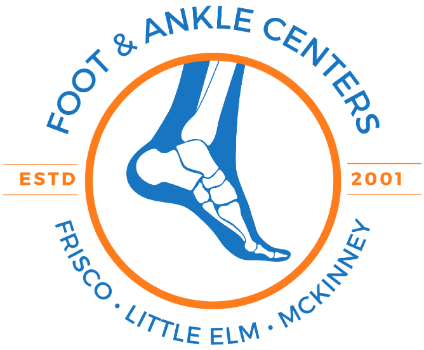Understanding and Treating Ingrown Toenails
Ingrown toenails are a common and often painful condition where the edge of a toenail grows into the surrounding skin. This can lead to discomfort, inflammation, and sometimes even infection. At the Foot & Ankle Centers of Frisco, Little Elm, and McKinney, we see many patients suffering from ingrown toenails, and we’re dedicated to providing effective treatments to relieve pain and prevent recurrence.
What Causes Ingrown Toenails?
Ingrown toenails can develop for a variety of reasons. Some of the most common causes include:
-
Improper Nail Trimming: Cutting toenails too short or rounding the edges can encourage the nail to grow into the skin. Always trim nails straight across and avoid cutting them too close to the skin.
-
Footwear: Tight, narrow, or ill-fitting shoes can compress the toes and force the nails to grow into the skin. High heels and shoes with a pointed toe box are common culprits.
-
Injury: Stubbing your toe, dropping something heavy on it, or repetitive trauma from activities like running can cause the nail to become ingrown.
-
Genetics: Some people inherit a tendency for ingrown toenails due to the shape of their nails or the structure of their toes.
-
Poor Foot Hygiene: Not keeping feet clean and dry can lead to skin irritation and make it easier for nails to grow incorrectly.
-
Medical Conditions: Certain conditions, such as diabetes, can increase the risk of developing ingrown toenails due to changes in circulation and nerve function.
Symptoms of Ingrown Toenails
The symptoms of an ingrown toenail can vary depending on the severity of the condition. Common signs include:
- Pain and Tenderness: The area around the ingrown nail is often sore to the touch and may be painful when wearing shoes or walking.
- Redness and Swelling: The skin around the ingrown nail may become red, swollen, and inflamed.
- Infection: If left untreated, ingrown toenails can lead to infection. Signs of infection include increased pain, warmth, pus, and a foul odor.
- Overgrowth of Skin: The skin at the edge of the nail may grow over the nail itself, further exacerbating the problem.
Treating Ingrown Toenails
If you suspect you have an ingrown toenail, it’s important to seek treatment early to prevent complications. Treatment options vary depending on the severity of the condition:
1. At-Home Care
For mild cases, at-home treatments can be effective:
-
Soak Your Foot: Soaking the affected foot in warm water for 15-20 minutes several times a day can help reduce swelling and alleviate pain.
-
Proper Nail Trimming: Carefully trim the nail straight across, avoiding cutting the corners too short.
-
Comfortable Footwear: Wear shoes with a wide toe box and avoid tight or high-heeled shoes to reduce pressure on the toes.
-
Pain Relief: Over-the-counter pain relievers like ibuprofen or acetaminophen can help manage discomfort.
-
Antibiotic Ointment: Applying an over-the-counter antibiotic ointment can help prevent infection.
2. Professional Treatment
If at-home care doesn’t improve the condition or if the ingrown toenail is severe or infected, it’s important to seek professional medical treatment. At the Foot & Ankle Centers of Frisco, Little Elm, and McKinney, our podiatrists offer a range of treatment options:
-
Lifting the Nail: For a mildly ingrown nail, the doctor may lift the nail and place cotton or a splint under it to guide the nail to grow above the skin edge.
-
Partial Nail Removal: In more severe cases, part of the ingrown nail may need to be removed. The doctor will numb the toe and trim or remove the portion of the nail that is growing into the skin.
-
Full Nail Removal: If ingrown nails are a recurring issue, the entire nail may need to be removed. In some cases, the root of the nail is treated to prevent it from growing back.
-
Treating the Infection: If the ingrown nail is infected, the doctor may prescribe antibiotics to treat the infection.
Preventing Ingrown Toenails
While it’s not always possible to prevent ingrown toenails, there are steps you can take to reduce your risk:
-
Trim Nails Properly: Always cut your toenails straight across and avoid rounding the corners. Don’t cut them too short, as this can encourage the nail to grow into the skin.
-
Wear Proper Footwear: Choose shoes that fit well and provide enough room for your toes. Avoid tight shoes and high heels that put pressure on the toes.
-
Practice Good Foot Hygiene: Keep your feet clean and dry, and regularly inspect your toes and nails for any signs of ingrown nails.
-
Protect Your Feet: If you’re involved in activities that put your feet at risk for injury, such as running or playing sports, make sure to wear appropriate footwear and take care to avoid trauma to your toes.
-
Be Mindful of Your Health: If you have a condition like diabetes, which can increase the risk of foot problems, it’s especially important to take good care of your feet and visit your podiatrist regularly.


Leave a comment
0 Comments